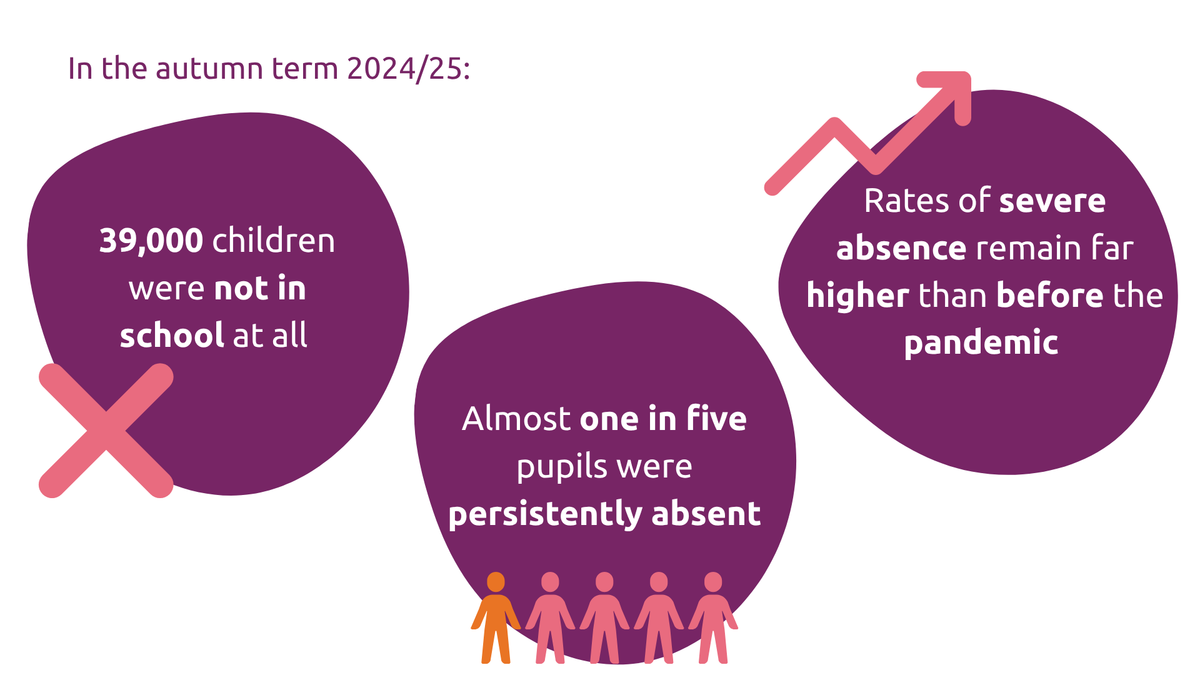School Census 2025: What it tells us about SEND and attendance

The Children's Commissioner's recent School Census, covering over half a million children, gives one of the most comprehensive pictures yet of the challenges schools are facing. While the data provides a broad overview of school life, it highlights two areas of particular concern for us at the Together Trust: special educational needs and disabilities (SEND) and school attendance.
SEND: a system under pressure
-
There are now 1.28 million children receiving SEND support and nearly 640,000 with an Education, Health and Care Plan (EHCP)
-
Numbers continue to rise sharply, with a 10.8% increase in EHCPs in just one year
-
Local authorities are under financial strain, with many schools reporting that funding does not meet their needs and specialist staff are unavailable
-
Families describe long waits, adversarial processes, and EHCPs that are sometimes generic rather than tailored to individual needs
-
Children with SEND are less likely to say they enjoy school, less likely to meet key attainment benchmarks, and more likely to be persistently absent
-
Critically, schools emphasised that progress for children on EHCPs or receiving SEND support is a major concern
We're seeing these issues first-hand in our services; children with SEND face multiple barriers. Although many schools are working hard to provide the right support, the system is struggling to keep up with the demand. Reform is urgently needed to ensure plans are timely, accessible, and genuinely improve outcomes.
Attendance: a growing national crisis
The census shows attendance is the top concern for secondary schools, with 63% listing it as a priority. The scale of the issue is stark:

Although the census does not directly measure emotionally based school avoidance (EBSA), it does reflect a wider national crisis of low school attendance and high rates of persistent absence. It is fair to presume that children experiencing EBSA are likely to make up a significant portion of the one in five children who were persistently absent in 2024/25.
Understanding EBSA
EBSA describes children and young people who cannot attend school due to emotional distress, often linked to anxiety or unmet needs. It is not about children being difficult or lazy. Many children want to attend but feel overwhelmed by the demands of the school environment.
A range of factors can trigger EBSA:
-
Mental health challenges
-
Difficulties with friendships or home life
-
Unmet needs in school, particularly for children with SEND
-
Sensory challenges or sudden changes in routine
Our Stockport SENDIASS data shows a steep rise in EBSA-related cases, with numbers doubling year on year. National figures reflect a similar trend: in 2022–23, 150,000 children were classed as severely absent, and one in 50 pupils in England missed at least half of their lessons in 2024.
The link between SEND and attendance
When children refuse to go to school because their needs are not being met, it cannot be treated in the same way as truancy or illness. Families tell us their children want to attend, but the environment feels too much. Without the right understanding and support, EBSA can quickly spiral into long-term absence, social isolation, and academic disadvantage.
What needs to change
-
Early identification of EBSA and attendance challenges
-
Timely access to mental health support – current CAMHS waiting times leave families without help for years
-
A broader, more inclusive definition of need in education policy, moving beyond a narrow focus on attainment
-
Reform of Access to Work and benefits so that young people with SEND can move into employment with the right support
Conclusion
Currently, attendance and SEND are two of the most pressing challenges in our education system. EBSA, although not directly measured, sits at the heart of both. If we are to ensure all children attend, engage, and thrive at school, we must better understand EBSA, listen to families, and design a system that meets the complex needs of children with SEND.





